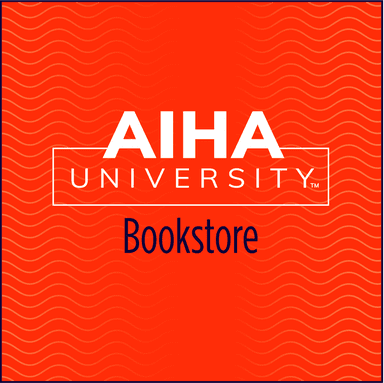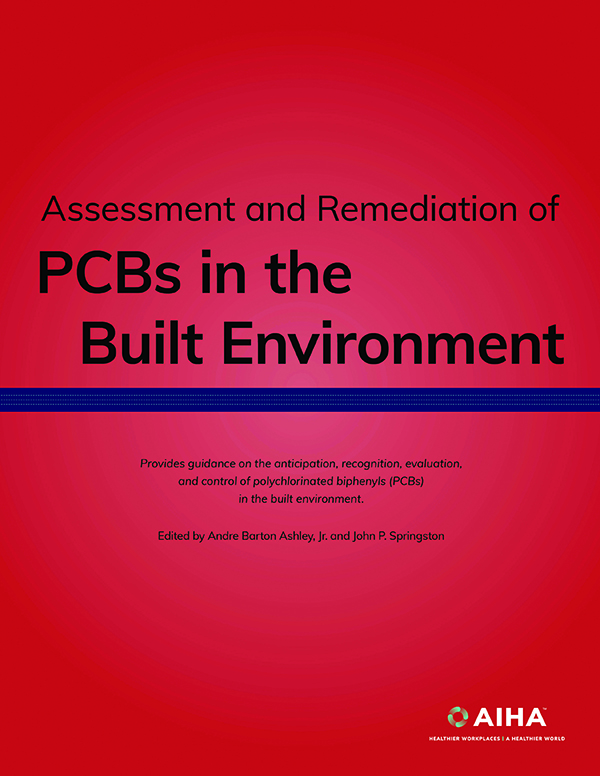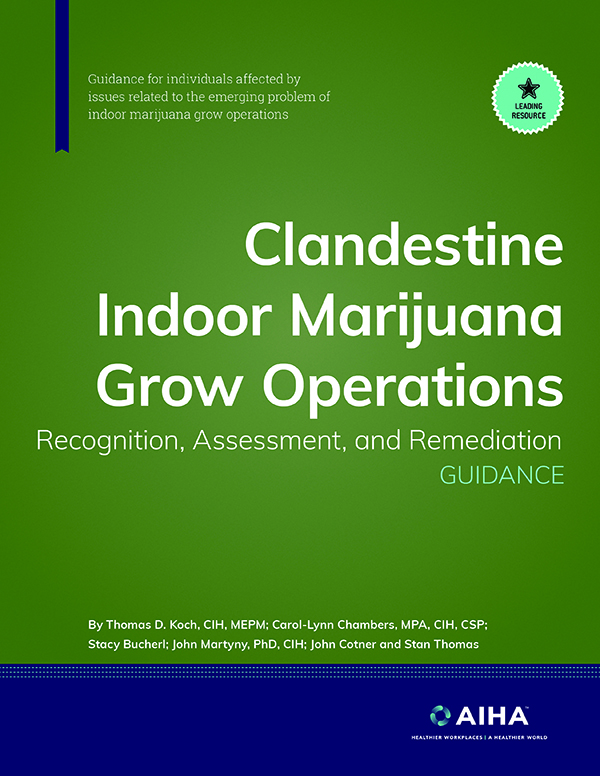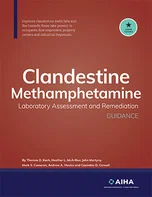


Emergency Prep & Response

$68.75 | MEMBER
$89.38 | NON-MBR
Assessment and Remediation of PCBs in the Built Environment
Edited by Andre Barton Ashley, Jr. and John P. Springston
Awareness of PCBs as a potential contaminant of concern in the built environment continues to grow. There is increasing evidence that many public, residential, and commercial buildings built or renovated between 1950 and 1979 may be impacted by the unauthorized use of PCBs in caulks, paints, mastics, and other building materials. This resource is intended to provide guidance on the anticipation, recognition, evaluation, and control of PCBs in the built environment.
Stock #: EENG17-790 | 60 pp | Softcover

$36.25 | MEMBER
$47.13 | NON-MBR
Clandestine Indoor Marijuana Grow Operations: Recognition, Assessment, and Remediation Guidance
By Thomas D. Koch, Carol-Lynn Chambers, Stacy Bucherl, John Martyny, John Cotner, and Stan Thomas
This guideline discusses this emerging problem in communities with respect to environmental health and safety issues that can affect a wide range of individuals and organizations. AIHA® has developed this guideline in collaboration with the Office of the Fire Marshal, Province of Ontario, Canada, to address the ever-increasing health and safety hazards associated with clandestine marijuana grow operations.
Stock #: EMRG10-764 | 17 pp | Softcover

$70 | MEMBER
$91 | NON-MBR
Clandestine Methamphetamine Laboratory Assessment and Remediation Guidance
Written by T.D. Koch, H.L. McArthur, J. Martyny, M.S. Cameron, A.A. Havics, and C.D. Connell
This guide explores clandestine meth labs and the hazards these labs present to occupants, first responders, property owners, industrial hygienists, and all others involved. It also discusses the many challenges these labs present to urban and rural areas nationwide. Industrial hygienists and other health and safety professionals will be fully equipped in recognizing, assessing, and abating the hazards associated with clandestine meth manufacturing and production.
Stock #: EMCG07-722 | 38 pp | Softcover
$19.95 | MEMBER
$29.95 | NON-MBR
Essentials of Pandemic Response: Considerations for Controlling COVID-19 and Other Infectious Diseases
In this next installment of the AIHA Essentials Series, review critical information about the COVID-19 pandemic to better prepare for and respond to current and future outbreaks of infectious disease. Sourced from peer-reviewed technical sessions presented at AIHce EXP 2021, each chapter is an executive summary of the experts’ groundbreaking findings. This eBook is a must-have publication for all OEHS professionals wanting to stay on the cutting edge of pandemic response and control of infectious disease.
Stock #: SIDR22-806 | 69 pp | eBook
$75 | MEMBER
$97.50 | NON-MBR
Guidelines for the Selection and Use of Environmental Surface Disinfectants in Healthcare, 2nd edition
Edited by Erica J. Stewart and Roberta Smith
Disinfection is recognized as an important aspect of infection prevention, especially for Healthcare Acquired Infections (HAIs) caused by certain microorganisms, such as Clostridioides difficile, on environmental surfaces. Determining appropriate disinfection of environmental surfaces requires balancing several factors, including risk, efficacy, patient and worker safety and comfort, surface and process compatibility, and cost. New products and processes for disinfection are creating opportunities for industrial hygienists to apply their expertise.
Stock #: EDIG20-793 | 52 pp
FREE RESOURCE
The Role of the Industrial Hygienist in a Pandemic, 2nd edition
By the AIHA® Biosafety and Environmental Microbiology Committee
The purpose of this guideline is to enhance and expand the resources, information, and tools the industrial hygienist needs to protect the working public from pandemic risks. The 2006 version has been expanded to include a lexicon, a section on exposure assessment, and a section on controls. It also provides a robust discussion of control banding and in-depth views of current and future control technologies. Steps for policies and plans for workplace protection and coordination with employees, management, and the public have been greatly expanded to recognize the importance of culture and language in communication with a diverse workplace. To address these and other “lessons learned,” a new section on best practices has been included.
Stock #: SEPG21-711 | Free PDF
$36.25 | MEMBER
$47.13 | NON-MBR
Technical Guide for Wildfire Impact Assessments for the OEHS Professional
Edited by Enrique Medina
Wildfire impact assessments are complex by nature and can involve the investigator, property owner, laboratory, and insurance company adjuster. The OEHS professional conducting a wildfire impact investigation must define its purpose and objectives and develop a working hypothesis to drive all phases of the assessment from initial inspection to sampling, analysis, and data interpretation. This guide will assist OEHS professionals in conducting defensible wildfire impact assessments and evaluating restoration options to promote a safe and healthy indoor environment.
Stock #: ESAH18-796 | 24 pp | Softcover
